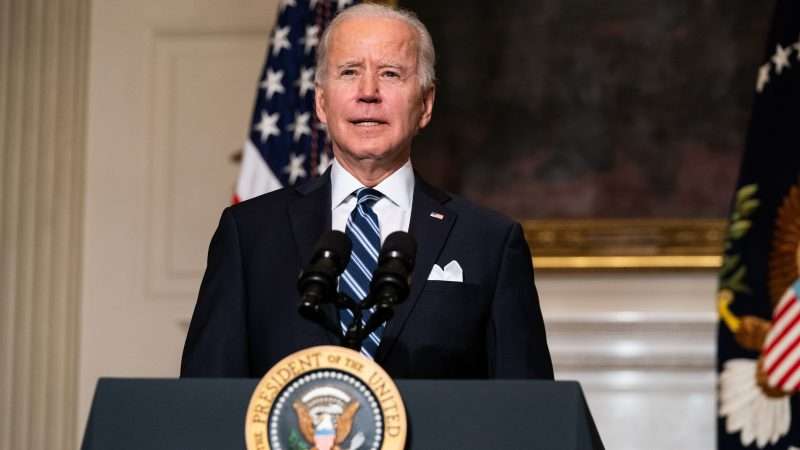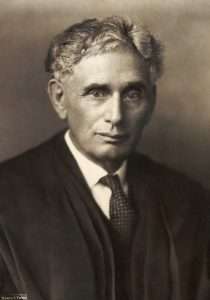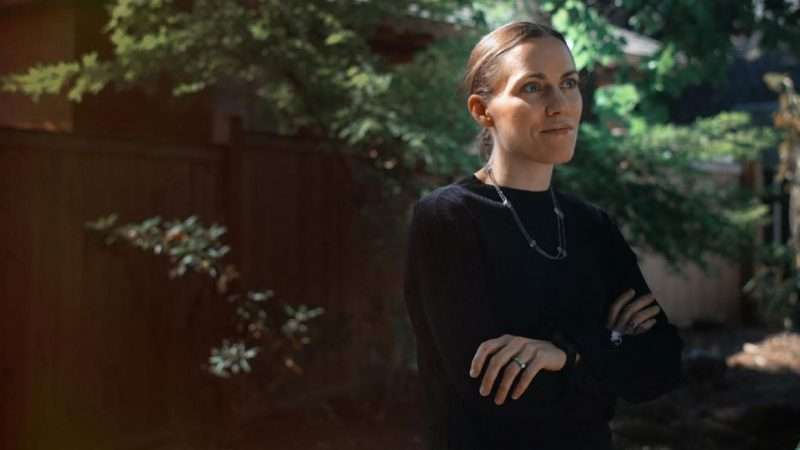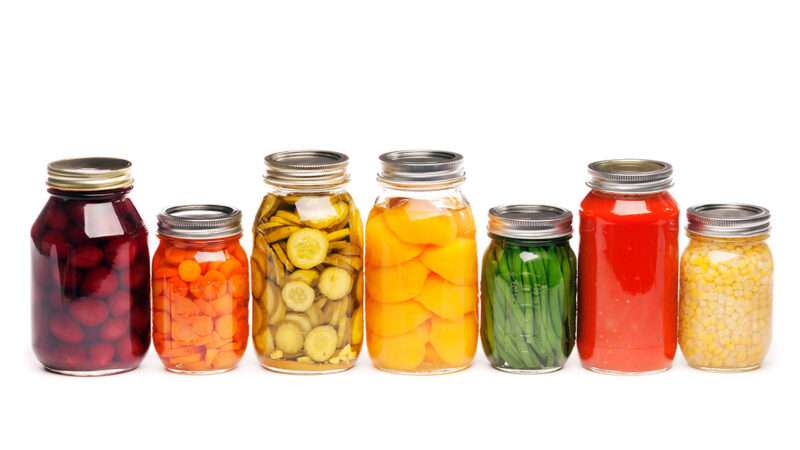Emily Oster is a Harvard-educated economist at Brown University—not the usual launching pad for gurudom. But she is nonetheless the sage at the center of a low-key cult. She popped onto the scene when her dissertation findings on “missing girls” in China were picked up by Freakonomics authors Steven Levitt and Stephen Dubner but ascended to a higher plane when she applied her background in health economics and statistical methods to pregnancy and childbirth in her 2013 book Expecting Better. She did the same for toddlers and infants in 2019’s Cribsheet; a third book in the series, The Family Firm, will be out this summer.
In a certain parental set, Oster’s books are passed around slightly furtively, with the air of letting someone in on a secret. Her goal is to help parents translate academic literature into actionable items, but she often ends up serving as a counterpoint to the anxious, overcautious parenting advice doled out in glossy mags and on playgrounds.
When you are an economist who tells pregnant women that research suggests it’s OK to have the occasional wine and sushi, you will be welcomed as a liberator. When you explain that sleep training and formula don’t show serious long-term negative effects, you will be worshipped. You will also be vilified by the keepers of the conventional wisdom, of course, and Oster has gotten her share of hate mail.
Enter COVID-19. As the pandemic shuttered schools for months, especially in coastal cities, Oster wondered whether that decision was justified. Unsurprisingly, given how new the disease was, not much definitive scholarship was available. More surprisingly, there wasn’t much good raw data either. No one seemed to be keeping track of what schools were doing and whether there seemed to be any impact on positivity rates.
That’s how Oster found herself serving as a COVID-in-schools data miner and later as a cautious advocate for reopening schools, a case she made in such outlets as The Atlantic, The New York Times, and her own Substack newsletter. Messages like “Schools Aren’t Super-Spreaders” and “Parents Can’t Wait Around Forever” have earned her the same mix of grateful relief and furious suspicion as did her previous work.
Reason‘s Katherine Mangu-Ward spoke with Emily Oster in December via Zoom, while Oster’s kids were home from their school in Rhode Island for a snow day (“yes, you can watch TV”) and new lockdowns were kicking in as COVID spiked around the country.
Reason: You collected a bunch of data and set up a data dashboard to track COVID in K-12 schools. I’m sure you’re doing a good job, but why wasn’t this being done by, say, the Centers for Disease Control and Prevention?
Oster: I don’t totally know. There were a lot of failures in federal leadership in this pandemic and this was one of them. There was this opportunity to set up a more centralized, government-run data collection effort, and it just didn’t happen. States were very slow to get started and [had] little consistency across the space. So what prompted us was the realization that there’s a ton of discussion with school reopening in the Northeast and on the West Coast, and we are seeing schools reopen in Georgia, Indiana—places with really high positivity rates. It felt like there was an opportunity to learn, but nobody was getting the information we would need to learn from that.
There are so many federal failures, I don’t know whether this one is worse than some of the other ones; it’s hard to pick which is the worst one.
There’s the old saw about states being laboratories of democracy. States really leaned into that with COVID, didn’t they? We got a strangely robust set of experiments on different variables. What data did you collect and what data do you wish you could have collected?
The core underlying pieces of the dashboard are information on cases, information on enrollments, and in-person counts—we want a rate, and for a rate, you need a numerator and denominator. So those are the two most key pieces.
The second most important [thing] is mitigation strategies: Are places masking? Are they distancing? What can we learn about what works to keep places safe? We have all of those pieces from districts that have decided to be in our study. We have some of those pieces from the couple of states that have been consistent with this kind of reporting. The best reporting comes out of New York, where they actually have, for every school, counts of cases and information on enrollments, and they require schools to put that in. Texas has a similar—not quite as good, but almost as good—infrastructure. So we pulled that down also.
The thing that would have been great is to have somebody tell states: These are the pieces of data you should be collecting. And in particular, actually knowing, at a minimum, the reopening plan for a state or for a district: Are you open or not? That would be great.
I’ve talked to a lot of states and almost none of them have said, “Well, we don’t want to tell you that.” But many of them said, “Well, we don’t know that. We don’t know how many COVID cases. We don’t know how many kids are in school. And we don’t know the reopening models of our districts.”
What are your (preliminary) conclusions so far about school reopening and safety?
I want to step back and say what we were thinking when we started. There was a really open question: Are schools going to be the locus of tremendous spread? That conversation has shifted a lot, but in the summer there was this idea that we’re going to open schools and that’s going to be the thing that destroys everything.
That does not seem to be true. We’re not seeing schools as the locus of large amounts of spread. The rates are actually quite low—even though the way we measure rates, just to be clear, is not spread in schools, but just people affiliated with schools who have COVID. So it doesn’t mean they got it at the school. But even there, we’re seeing rates that are pretty much in line with what we’re seeing in the community. Maybe a little bit lower for students, maybe a little bit higher for staff.
We’re seeing fairly optimistic information about the idea that you could have schools operate safely, even in areas where there’s some reasonable amount of community spread. Masking probably does matter. That’s probably the most robust correlate in the data, that those places that are masking seem to have much lower rates than places that are not. But I think the thing that we got the most attention for—rightly, because it moved people’s priors a lot—was just this idea that not everyone at the school got COVID the day it opened.
We are seeing some of these differences across age groups. To the extent that there are places with larger numbers of cases, they seem to be high schools.
But not nearly as large as colleges, right?
I think that’s been a really interesting aspect of this, which is that we have seen the thing that people feared at the college level. Not at all colleges, but a lot. When Penn State opened, you could see on a COVID map where Penn State is, because it was just totally overwhelmed. In some ways I find it actually surprising that we have not seen more high schools that looked like that. And I’m not sure why that’s so different.
Over the summer, there really wasn’t a consensus about what reopening K-12 schools would mean. It is now broadly accepted that opening, particularly elementary schools, is almost certainly not going to trigger a massive uptick in cases or fatalities. But policy making seems to lag that shift in conventional wisdom. Why?
I think you’re right that the conventional wisdom shifted. Many people moved to: “Oh, actually, the science is not what I thought it would be.” And there are a lot of places that are open. A lot of this discussion is happening on the sides of the country—we forget that there are a lot of kids who have been in person in school. I live in Rhode Island, where the schools are open. That’s not unrelated to this observation. I think that the governor listened and this was something that was important to her. Chicago is going to try. New York is trying, in a sense. There are some movements in that direction, but there has been a lot of resistance.
There’s been a lot of resistance from the unions. Some of that they’ve walked back a little bit. [President of the American Federation of Teachers] Randi Weingarten has walked back to saying we should have K-5. That’s something. Other unions have walked less back. The politics of this got really complicated and it’s been hard to ramp them back. I think that the Biden administration will be able to do that more easily because the fact that he is saying schools should be open is really different than [President Donald] Trump saying it. I think that’s been good, but it’s uphill. We haven’t moved as much as I would’ve liked.
When we last talked, for a Reason podcast about your work on pregnancy and early childhood, we discussed how some people interpreted your work as giving them permission to do stuff they wanted to do anyway that felt like common sense to them—drink an occasional glass of wine, eat sushi, use baby formula. With those books, you got some pushback from obstetricians and pediatricians. There are some parallels with your COVID work, including pushback from teachers, unions, and school districts on the idea that it might be OK to open schools. How has your experience with the medical establishment shaped the way that you’re dealing with the education establishment?
It’s a fair comparison. In both cases, a lot of the pushback was “You’re not an expert.” I spend a lot of time with people telling me that I’m not an expert in things, probably because I spend a lot of time talking about things which I’m not much of an expert in. One of the things that the pushback misses is that there are some pieces of this in which I am an expert: data and statistics and thinking about decision making. I find that pushback frustrating, but also very familiar.
The main way in which I have thought about this differently is that I actually tried to listen a little bit more. In the case of the school stuff, at some point I realized that we had made the point about data and people had accepted the data, but as you say, that’s not the whole thing. And sometimes there’s value if you actually want to get things changed. This is a little different than the pregnancy thing, because I wasn’t trying to get any particular policy change there. I don’t particularly think [policy makers] should say it’s fine to drink during pregnancy.
Here, it feels like there really is a policy point. There was a point where I said: OK, the data is not going to be enough. I need to make it clear that there are other things going on and incorporate that into some of my thinking. That insight was probably informed by having dealt before with people who are never totally going to back down.
Talk a little bit about the culture of academic inquiry around COVID-related questions. Are people asking the right questions now? Is there work that will have to be done after it’s over, to be useful for the next pandemic? How is the research community dealing with COVID-related questions, especially in the social sciences?
I think from the social science standpoint, we will have a lot of value to add later. A lot of the value we can eventually add to that analysis is going to be around: What are the impacts of learning loss on kids? How can we think about fixing that? Are there things that work better or worse? That’s not something we can answer this week. I think academics in general have struggled a little bit with the fact that there’s a lot of need for information right now. And that’s not really our thing.
Even for me, I’ve tried to be very clear that the stuff I’m doing about schools, this isn’t research. It’s not research in the way that I would typically approach research; it’s a public service project. I am using the research tools I have to try to make the data as good as possible, but I’m not trying to write a paper with these crowdsourced data from districts. I’m trying to help people figure out if schools should be open or not.
One question that surfaced last spring and reemerged in the fall much more urgently is: What school is for? We’ve been papering over disagreements about the answer to that question for a long time, and then suddenly we couldn’t anymore. So what is school for?
School is serving two roles. It is a child care solution and it is teaching people to learn. At the beginning, it was like: “What do you mean? School is not child care! I’m not a -babysitter!”
First of all, I found that a little disrespectful to people. What’s wrong with having part of your job be child care? That’s a totally reasonable job.
But the other thing is it’s not really fair to say to parents: “Can’t you take care of your own kid?” You told me I have to put my kid in school eight hours a day! That is literally a law; it is a law that my kid has to be in school. And now you’re telling me that the expectation should also be that I am free for all of that time, even though I’m legally required to not have my kid here. So it’s odd that we’ve set up this whole system in which people are required to go to school and then we’re going to be, like, “Well, school’s not your child care.” You told me it has to be!
Part of what tamped that whole discussion down is that, actually, remote learning is also not good for the learning piece of school. Once people realized that [kids] can’t learn in that environment, it became a little bit less compelling to say, “Well, I’m not your child care.”
Because of the focus on physical safety, schools ended up asking teachers to pivot to online or hybrid or, if the kids are in the classroom, changing curricula to accommodate safety requirements. Teachers unions are saying, “We are advocating for teachers,” but they’re definitely also making the teachers’ lives substantially harder and more unpleasant in a lot of ways. A lot of your work is about how to think about tradeoffs. What went wrong in the unions’ thinking about tradeoffs here?
I was on a webinar with the CEO of Chicago Public Schools the other day, and she was saying basically that because they’ve gotten so wrapped up in these safety things, they have not really been able to address what she thinks is a much bigger issue, which is that this is a very, very hard teaching environment. There are ways that you could improve it.
If we were redesigning now, we would do it totally differently. This hybrid thing where people are [teaching] both kinds of kids at the same time, that is not good. There was this district in North Dakota that explained to me that what they did was basically, at the beginning of the year, there’s a six-week block and you opt in to being a regular kid who comes five days a week, or you can be a virtual kid. The virtual kids are taught in a totally different stream, by virtual teachers in a virtual academy. And the in-person kids are in person in a regular school environment. And then every six weeks, the kids could change what environment they were in. I think that was a much better structure and much more sustainable than what they’re apparently going to ask people to do in the Chicago public schools, where the kids in the classroom are on computers with their headphones, because everyone has to have exactly the same learning environment. That’s just not good.
Thinking about tradeoffs can actually be more difficult when you’re talking about it as a public policy choice rather than as an individual choice.
The problems with that were more significant in places where the labor relations were worse. In places with more functional labor relations, we have a little bit of an easier time encouraging people to come together.
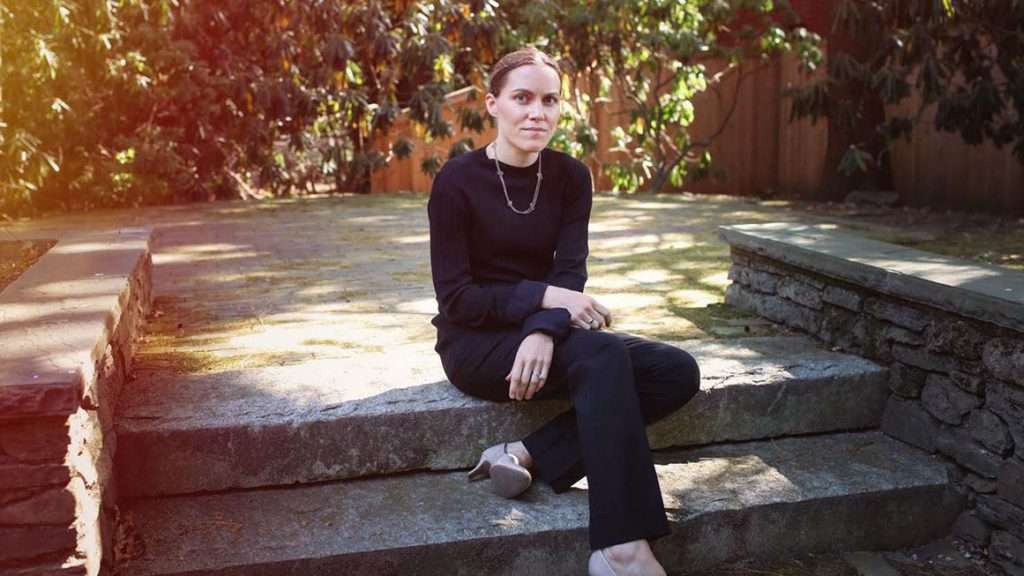
Your forthcoming book is called The Family Firm, and it focuses on helping families with older kids do better management and strategic decision making. With so many families making relatively high-stakes decisions under COVID, is there anything you can preview from that book about how to be better at making those decisions?
In many ways, COVID only amplified a lot of the issues I grapple with in The Family Firm. Early in the pandemic, I wrote in my newsletter on a five-step process for making decisions during COVID. The processes I outline in The Family Firm draw a lot from this but turn them to more general questions. It’s not just COVID risks and benefits to think about but a broader set of evidence to evaluate. In both settings, I keep coming back to the key bookends: Start by thinking about framing the question you’re asking and end by making a decision. This may seem facile, but whether in COVID or not, my sense is that people do not often stop to think about what they really see as the choice they are making, and they allow decisions to fester far too long.
A lot of family decision making is around education. How do you think the disruption of COVID might change the way families think about their choices?
I’m not sure! Some families have already pulled their children from public schools and put them in private or Catholic options which are doing in-person learning. I wonder if this will generate a long-term move in that direction. A lot of trust has been lost here. I think the other central issue for me is that this has really reinforced school-level inequalities. I think we’ll see a further reckoning about how we serve kids with fewer means.
In your newsletter this morning, you wrote: “As salient as it is, COVID-19 is not the only thing going on in people’s lives.” It was part of a plea for compassion as we look at other people’s choices. You have become a target for people’s ire about the fact that all the choices are bad. Where does that crop up the most?
People feel like our data have been used to make people go teach in their schools and they don’t like that. That was the context for this [angry] email this morning—somebody who wrote, “My family is going to die and our blood is going to be on your hands.”
But the other piece is thinking about how we can realistically message but also recognize that there are other things going on in people’s lives. There’s a danger of just going too far and stating this risk as if it is a totally different thing than all other risks anyone would ever face. That’s not right.
But then people push back on that. It does feel to many people like this is a totally different risk and it is the only thing anyone should ever be thinking about.
This interview has been condensed and edited for style and clarity.

from Latest – Reason.com https://ift.tt/3t4hf5Z
via IFTTT
